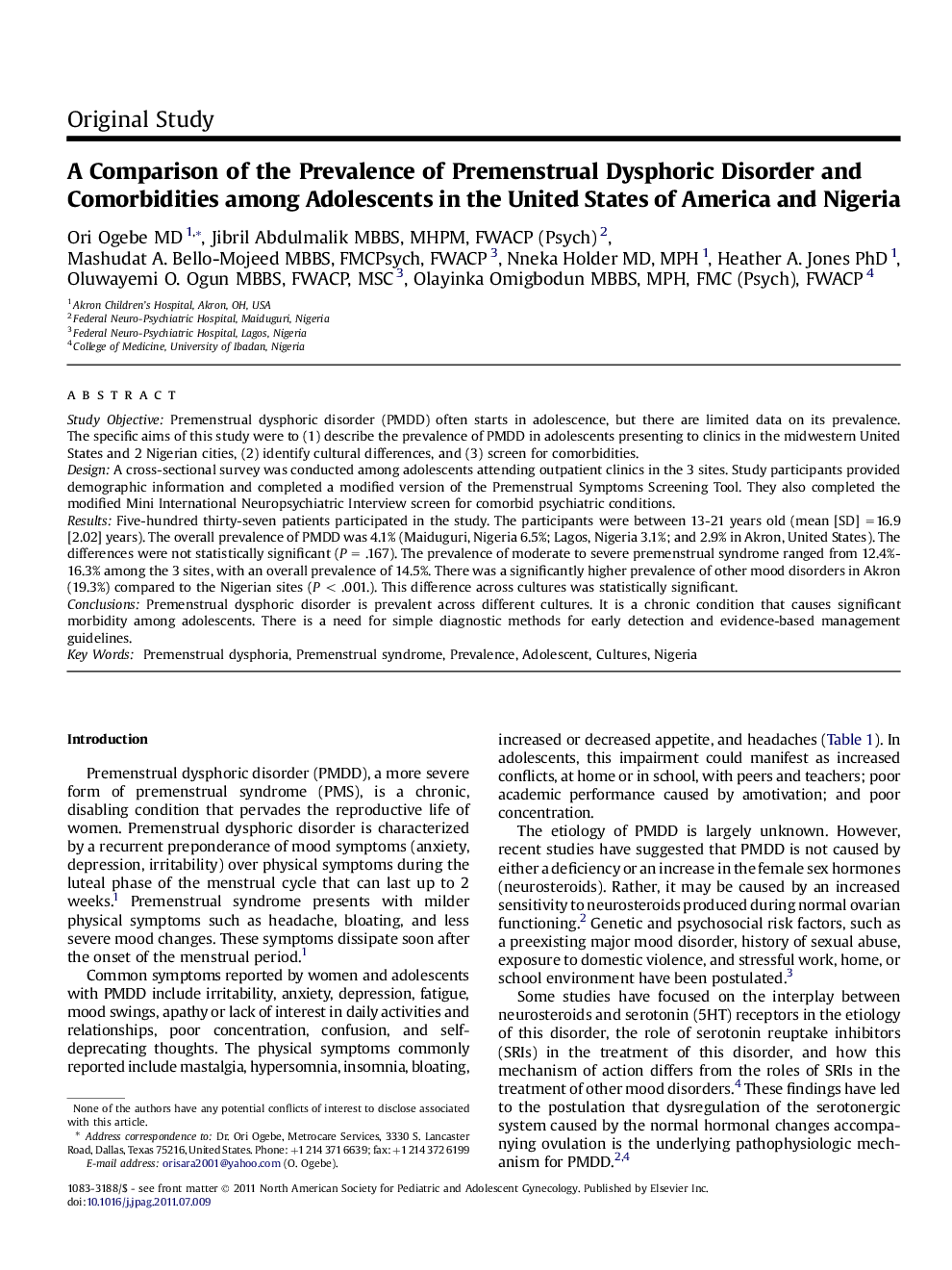| Article ID | Journal | Published Year | Pages | File Type |
|---|---|---|---|---|
| 3963017 | Journal of Pediatric and Adolescent Gynecology | 2011 | 7 Pages |
Study ObjectivePremenstrual dysphoric disorder (PMDD) often starts in adolescence, but there are limited data on its prevalence. The specific aims of this study were to (1) describe the prevalence of PMDD in adolescents presenting to clinics in the midwestern United States and 2 Nigerian cities, (2) identify cultural differences, and (3) screen for comorbidities.DesignA cross-sectional survey was conducted among adolescents attending outpatient clinics in the 3 sites. Study participants provided demographic information and completed a modified version of the Premenstrual Symptoms Screening Tool. They also completed the modified Mini International Neuropsychiatric Interview screen for comorbid psychiatric conditions.ResultsFive-hundred thirty-seven patients participated in the study. The participants were between 13-21 years old (mean [SD] =16.9 [2.02] years). The overall prevalence of PMDD was 4.1% (Maiduguri, Nigeria 6.5%; Lagos, Nigeria 3.1%; and 2.9% in Akron, United States). The differences were not statistically significant (P = .167). The prevalence of moderate to severe premenstrual syndrome ranged from 12.4%-16.3% among the 3 sites, with an overall prevalence of 14.5%. There was a significantly higher prevalence of other mood disorders in Akron (19.3%) compared to the Nigerian sites (P < .001.). This difference across cultures was statistically significant.ConclusionsPremenstrual dysphoric disorder is prevalent across different cultures. It is a chronic condition that causes significant morbidity among adolescents. There is a need for simple diagnostic methods for early detection and evidence-based management guidelines.
